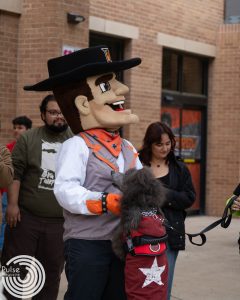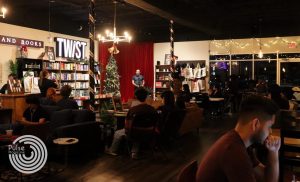Texas’ Disastrous Rare Winter Storm
“AEP is now reporting that outages may last until [Feb. 15],” wasn’t a headline I expected to read on ValleyCentral.com during a rare winter storm that left thousands of Texans without power.
The storm hit after Valentine’s Day. The night before, I wrapped myself in a thick blanket, and I could hear the humming of the transformers outside my apartment. It didn’t cross my mind that I’d wake the next day to intensely cold temperatures, silence, and darkness.
AEP, one of the largest electric energy companies in the United States, tweeted on Feb. 16 that “the Electric Reliability Council of Texas instructed AEP Texas and other electric utilities to increase the number of service interruptions in addition to the existing interruptions.” That means leaving more people without power.
That was unfair to our community because, according to the Brownsville National Weather Service, it was reported at 6:35 a.m. Feb. 16 that the lowest temperature in the Valley was 21 degrees in the San Manuel area. Honestly, it felt colder.
As news reports flood people’s social media with hard freeze warnings, my heart breaks during intense weather because I think about how the homeless community is feeling. During the middle of the winter storm, I recall seeing a homeless person sleeping on a bench at a park. They were wrapped in a thin-looking brown blanket and their belongings were scattered around them.
To add to the growing list of problems, the city of Edinburg issued a boil water notice between Feb. 16 to 19 to prevent drinking harmful bacteria and other microbes. Other cities such as Alamo, Elsa, and Mercedes issued similar notices. Yeah, with what electricity? To the cities’ credit, they did distribute bottled water during this.
While some were freezing, others escaped it by using their cars as a heat source. Unfortunately, this would cost several lives. I saw a news headline saying that two Texans died from carbon monoxide (CO) poisoning because they left their car running in a closed garage. According to the Centers for Disease Control and Prevention, symptoms are headache, dizziness, weakness, upset stomach, vomiting, chest pain, and confusion.
“CO symptoms are often described as ‘flu-like’”, the CDC wrote. “If you breathe in a lot of CO it can make you pass out or kill you. People who are sleeping or drunk can die from CO poisoning before they have symptoms.”
Even UTRGV was caught by the winter storm’s freezing grasp. The university sent multiple emails to the campus community that it’s closed. In case the weather forgot, students are learning remotely.
Although the university’s Wi-Fi can reach the parking lot, what if our technology dies? I was with my roommate in his truck near the campus library, hoping for a signal. The moment I did, my laptop died. I walked around the campus to see if any building was possibly open, but I returned to my roommate’s truck unsuccessful. Thus, begs the question, where could we’ve gone to safely and warmly charge laptops when there was no power?
Students voiced their issues from the winter storm on the UTRGV Students Facebook group. Zayda Cantu, a nursing junior in Laureles, commented that she’s been without power since 6 a.m. Feb. 15.
The nursing junior sent emails to her professors; however, she also called because she worried that they didn’t deliver. Cantu said they were understanding and worked with her.
Cantu was able to get a generator because of a family friend. However, “it’s not enough for the whole house,” she said.
“It took a whole two days and just now we are adjusting with what we have,” Cantu said.
For some time, Cantu wasn’t able to make food. However, her brother was able to get food from Taqueria Mario’s in Los Fresnos. I remember seeing fast food restaurants closed or have long lines on University Drive in Edinburg.
“My dad made the stove work so that is how we are boiling water and cooking,” Cantu said.
Regardless of the storm, I’ve seen community members act to help. For example, the rgvmutualaid, an Instagram page that shares support for the RGV community, posted before the storm about a rapid resource drive. It asked for clothing, food, and hygiene products.
“Temperatures are dropping … to record lows,” the Instagram post stated on Feb. 10. “While it’s exciting for some, for others it can be detrimental to survival.”
That’s what I love about the Valley. Its people know how and when to offer help, especially when lives are on the line. When the next natural disaster hits the RGV, consider checking in with family, friends, and neighbors. It could be lifesaving.





